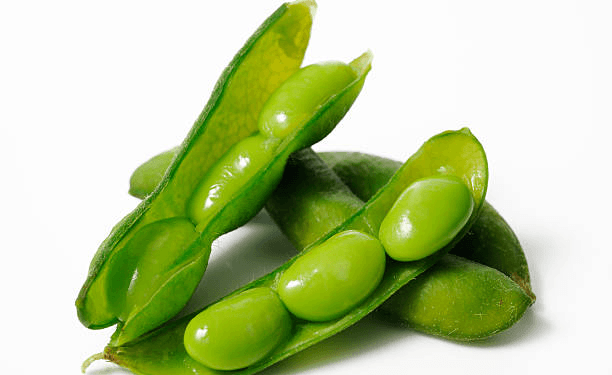Soybeans are the source of items made from soy. Vegetables like soybeans have long been a staple in Asian cuisine.
Tofu, soymilk, soy flour, miso, and other foods are all made from soybeans. In contrast to other plant foods, Soybeans have a high protein level comparable to animal meals. Soy is a complete protein, just like the meat is. It offers every critical amino acid your body requires but cannot manufacture independently.
Adding Soy Products to Your Diet
You don’t have to be a vegetarian or vegan to include these nutritious legumes in your diet; however, soy foods have long been used as milk and meat substitutes.
Lentils, peas, and dry beans like black beans and navy beans are all linked to soybeans. Soy is high in protein, just like all other legumes. Soy is an unusual “complete protein” source since it has all the necessary amino acids.
Soy is also a great source of monounsaturated and omega-3 fatty acids, both good for you. Together with the fact that it contains a lot of the antioxidants called isoflavones, this makes it beneficial for your cardiovascular system.
The various kinds of soy products and how to include them in your diet are listed below.

1. Soy Milk
Soy milk is made from soaking, finely crushed, and strained soybeans. Both chilled and room temperature options are offered, and some have vanilla or chocolate flavours. You can use soy milk for milk in recipes or as a beverage. Many variations are similar to cow’s milk because they have been enriched with vitamins and minerals.
You can use fortified soy milk instead of dairy milk for cooking and drinking. One cup of soy milk is a rich source of calcium and vitamin D.
Soy yoghurt and soy-based coffee creamer can also be made by those who want to avoid dairy products.

2. Tofu
Tofu is a versatile food with a creamy cheese-like flavour and various textures. Firmer kinds are used for grilling, soups, and stir-fries, while softer varieties can be pureed or combined with other ingredients to make smoothies, mousses, and dips.
Despite tofu’s generally bland flavour, it is incredibly versatile when cooked since it can absorb the flavours of various foods. Tofu, a common ingredient in many popular meals, is an additional excellent source of calcium.
3. Tempeh
Tempeh is made from cooked, mildly fermented soy that has been shaped into cakes, frequently with the addition of grains or other legumes. It tastes unusual since it has been fermented; it tastes like yeast or mushrooms.
Due to its fermentation, tempeh is unique. It is a compact block and typically has a bit more texture and bite than silken tofu. Even more protein, fibre, and calcium are present in tempeh, along with probiotics from the fermentation process and beneficial prebiotics for the gastrointestinal tract if it isn’t pasteurized.
Tempeh is frequently used as a meat substitute because of its solid texture and ability to be crumbled or sliced into pieces like steak. While tofu has a higher calcium content, tempeh has a higher protein and iron content.

4. Edamame
Edamame beans are whole and immature soybeans called vegetable-type soybeans. They are young, immature soybeans that are still green. Before being chilled and served as an appetizer, they are salted and cooked. The cooked soybeans can also be taken out of the pods and used for salads and other dishes.
Edamame is green when compared to different soybean cultivars. It is a fantastic source of protein and adds a crunchy texture to any salad or vegetable meal. It is found in various spreads, such as pesto and edamame hummus.
5. Soy Sauce
A liquid known as soy sauce is made from steamed or roasted soybeans. The two types are shoyu and tamari. Shoyu also contains wheat, whereas tamari only includes soybeans. Many recipes, including dressings and sauces, frequently call for soy sauce. Miso, a salty soy paste, is made by fermenting soybeans.
Miso paste and soy sauce are used to flavour food. Soybeans, wheat, and other components are used to make soy sauce. It is used in salads, marinades, and sauces because of its strong earthy flavour. Soy sauce has very little nutritional value.
It is high in sodium, low in calories, and has a small quantity of protein. Despite being low in protein and high in sodium, miso does contain some vitamins, minerals, and probiotics as a byproduct of the fermentation process. Although low-sodium soy sauce exists, it still has a significant salt level. If you are on a sodium-restricted diet, it is recommended that you avoid all forms of soy sauce.
Conclusion
Soy is one of the foods consumed the most worldwide and is an excellent source of high-quality protein. The quality of soy protein is comparable to that of meat, milk, and eggs. This is one of the reasons soy products are widely used as meat alternatives.
Soy is a convenient source of iron. Our bodies require iron to carry oxygen to the muscles and other tissues.
It is the nutrient that the body requires the most. It is exceptionally rich in antioxidants, fibre, phytoestrogens, Omega-3 fatty acids, saturated fats, and high-quality protein, in addition to being a great source of protein. According to health professionals, Soya beans are essential for a healthy lifestyle.






















































